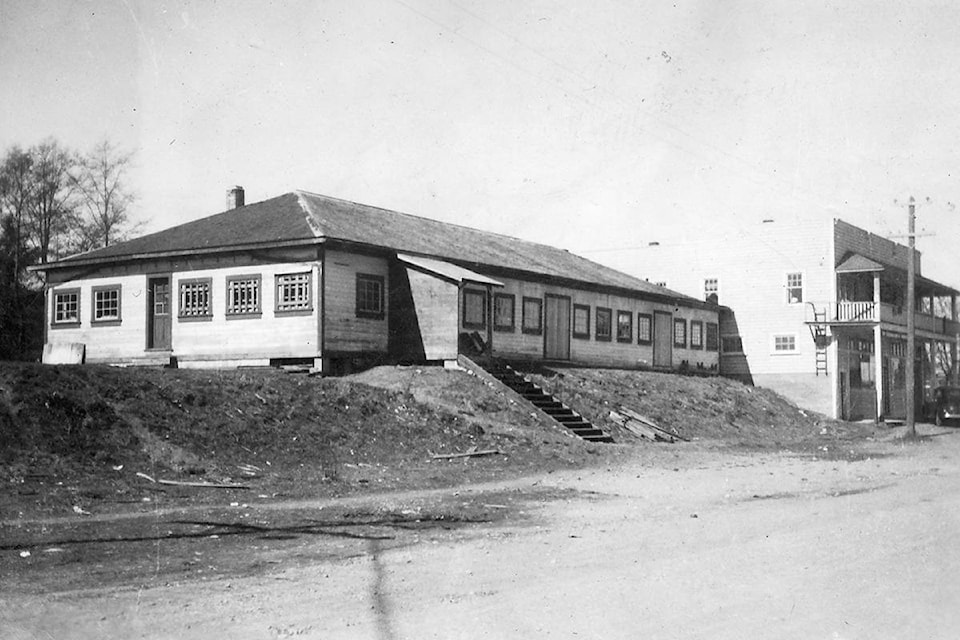By Erika Anderson,
Museum at Campbell River
Social spaces bring back evocative memories.
In the early days of Campbell River, the local dance pavilion was one of those places. Built in 1918, the Lililana Pavillion was one of three social centres in town, the others being the Willows Hotel and the Quinsam Hotel. Located at the corner of Hospital Road and the Island Highway, along the shore of Willow Bay (now the site of Shoppers Row), it was built by Charles Thulin, and named after his three daughters; Lillie, Elin and Anna. Right from the opening it became an institution in the community. Picture shows, concerts, dances and other events at the Lililana Pavillion attracted people from logging camps, from down-island, from Quadra Island, and of course locals. Funseekers from the Comox Valley were said to arrive by the car load. On dance nights the residents of International Timber Company’s Camp 8 loaded into the old 5-spot caboose to come to town and enjoy the festivities. They would dance all night until “Spoolie”, the oiler, would come to the doorway in his greasy overalls and yell “Time to go!”
One of the most entertaining accounts describing dances at the Lililana Pavillion came from Alvin Parker. Alvin would come up from Courtenay with his band, the Moody Dance Band, to play in Campbell River in the 1920s. They would drive up in a 490 Chev with a cloth top, six people in a car, carrying the drums on their laps. He was the drummer and he recalled home brew would be stashed behind his drums because no alcohol was served at the dances. He also recalled the frequent fights. “The fights would start about anything, just for the love of fighting. Many times there would be 20 tangled up in it, and women included. Nothing to see a woman knock a man out cold.”
It wasn’t all rowdy dances at the Lililana Pavillon. Emmiline Pankhurst, an early BC feminist and champion of women’s rights, presented in 1921 at the pavilion on behalf of the Council of Social Hygiene. A precursor to the public health movement, the social hygiene movement was attempting to disseminate sexual education through the use of scientific research methods and modern media techniques. She was given free use of the venue and collected the largest amount in donations from any of the sites on Vancouver Island where she presented.
One corner of the building, the corner with the bars on the windows, was rented by the Bishop (Jim English), who later became the proprietor of the Quinsam Hotel. In this corner of the pavilion he operated a shop that carried liquor and ice cream. This was at a time when Campbell River did not have a liquor store. With the Beehive Café nearby, the Bishop did not however have a monopoly on ice cream sales.
In January 1945 the property was purchased by Henri Dubeau and demolished. Times were changing in Campbell River and some of the old haunts were being replaced with new developments. There were now new places to go and dance, like the Community Hall, but old-timers never did forget the Lililana Pavillion.
